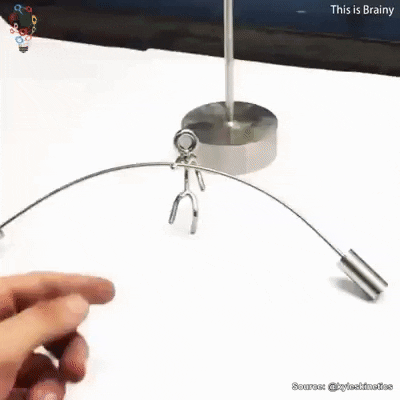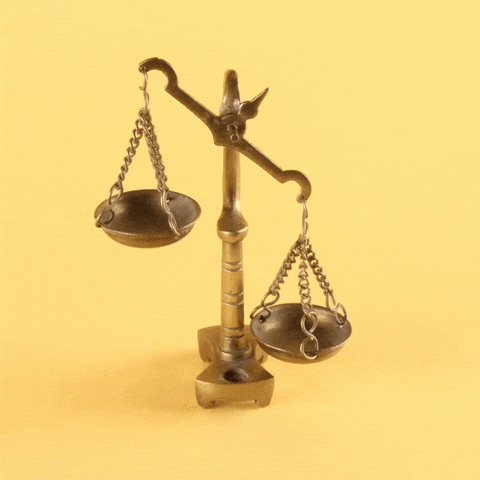How To Fix Muscle Imbalances & Weaknesses
How To Fix Muscle Imbalances
Muscular imbalances may exist because of a genetic disposition. We may also see athletes that one side is favored over the other, which can come from a dominant side (being left-handed or right-handed), favoring an injury, or protecting an injury. We can see muscular imbalances through multiple different angles.
One of the easiest ways to see a muscular imbalance is by having athletes perform a bilateral back squat. Oftentimes athletes that favor one ankle or an issue with the lower back from one side or the other will rise and rotate slightly as they come up. As coaches, we need to be aware of an athlete twisting on the way up to the top because it is a sign of a muscular imbalance.
We can also see muscular imbalances when athletes perform single-leg squats. One thing that may happen is that we will see one leg be explosive and effortless in performing the movement while the other leg will end up out of position, off-balance, and just struggling. A lot of kids will say, “It isn’t the weight. It’s my balance.” Kids who say this is broadcasting to the coach that they are struggling with a muscular imbalance that needs to be fixed.
Chronic use sports, like baseball or swimming, sports with a lot of volume, have a few simple factors that impact muscular imbalances. In high-volume sports, there is a lot of training that can lead to inflammatory factors and issues of scar tissue developing which leads to the body protecting specific sides or specific joints over another joint.
Some of the issues that happen from muscular imbalances can be alleviated by doing mobility work. Noticing that one hip or one ankle is tighter than the other, we can do specific mobility work, like a pigeon pose or an ankle distraction on a specific area, to help remedy the muscular imbalances. Doing mobility exercises between sets can help with heating muscle areas that need to be opened up and targeted.
I already mentioned genetic disposition leading to muscular imbalances. For instance, valgus knees can be a genetic disposition. Flat feet is another potential issue that can lead to muscular imbalances if not handled properly.

Adjusting Identified Issues
Simple stability exercises with proper warming up can help adjust the problem areas into being not as weak. PVC pipe walks are great for ankle issues. We can also do heel-to-toe walks while holding an isometric action, like a hydro weight overhead. The hydro weight held overhead targets stability in the shoulders. Doing different styles of walking while holding the hydro weight isometrically overhead, the proprioception in the feet is improved while also opening up the upper back and being stable with a sense of dynamic trunk control.
Higher speed movements are also a way to improve coordination and target imbalances when warming up. We want to get rid of friction. Friction can prevent power output. Simple concentric body weight squats with a fast drive-up can, as we slowly get quicker, can then lead to simple pogo hops. The simple pogo hops help with absorbing energy and reacting faster for better power output in a workout.
Unilateral movements are also great for targeting muscle imbalances and weaknesses when warming up. Cossack squats make us focus on keeping the heels grounded and target tight hips and ankles. Individuals with issues in their hip flexors can do single-leg squats with their hands up to make sure they feel good before going into their leg workout.
We can also warm up with specific types of distraction drills to target areas like our shoulders or ankles.

Isolation Exercises
Isolation exercises are great to iron out muscular imbalances. Imagine going into a workout and from chronic overuse a muscle doesn’t fire at the beginning of a training session, we can focus on a slow eccentric with a light load to isolate the muscle and wake it up before getting into the workout.
Example 1: How Do Athletes Jump?
One of the easiest ways to see muscular imbalances is to have athletes jump onto a box. Instead of doing a box jump where they equally distribute their weight to both legs, jump, and land perfectly. Instead, we tend to see athletes favor the leg they jump off of unilaterally. The athlete struggles to jump with two legs. We want athletes to be able to jump off of two legs effectively so we can improve their sports performance in other areas. It can be fixed in multiple ways.
Another way to test for muscular imbalances using jumps can be done using single-leg bounds. Notice how far the athlete is jumping and how well they are reacting on each leg. Often you will see one leg pull ahead of the other. Typically one leg pulls in front of the other because of a lack of dynamic trunk control or inability to hold the trunk upright. The single-leg bounds provide a lot of simple information that can be used to improve athletes’ workouts.
It is important to analyze sports movements to see if individuals favor one side over the other when they are cutting, running, and jumping. The first thing that has to be done is to use stability-based movements. We want to then slowly add load to the stability-based movements to alleviate and rid the body of issues around coordination.
Example 2: Does The Athlete Bench And Fall Away?
Training any athlete who throws quite a bit, like baseball players, you will see them turn their shoulders in when bench pressing and fall away from the strong arm.

It comes back to making sure of being aware of the athlete’s sport’s movements. So dealing with baseball players, we need to make sure we are doing neutral presses with a barbell or dumbbells with a heightened awareness of what the upper back is doing.
The fastest way to alleviate a lot of issues with athletes who throw a lot, especially baseball players, is using dumbbells with pauses and forcing athletes into slow eccentrics when lifting. The slow eccentrics into a pause force the body to have a muscular action for a longer period to raise awareness. The raised awareness makes the muscles more active.
A favorite trick of mine to trigger more muscular action and awareness is to put a band on athletes’ wrists when pressing. The band forces the rhomboids and upper back to be more active which leads to better-pressing mechanics.

Example 3: Back Squat Movement?
As mentioned before, back squatting is a great assessment. It is a simple movement without a crazy amount of technical demands. As coaches, we want to get athletes to squat just the bar or 70 kilos, depending on strength. Pay attention to how the athlete moves. If the athlete comes down, drives out the bottom, and then shifts one way or the other, we can see the broadcast of a muscular imbalance or weakness to be targeted. We might even have an athlete who, while working through an eccentric pattern, has a lot of pain around 90 degrees. Again, issues are being broadcast that can be addressed.
I said earlier, do a back squat and do a mobility exercise that helps to alleviate the stress. Go back and forth between the mobility exercise and the prime mover movement that is being performed to try and fix the imbalance.
One way to fix muscle imbalances and weaknesses identified through squatting is to train unilateral patterning. For instance, we can do a single-leg squat. We want to train the weaker leg first to have more freshness to improve the strength in the weaker leg. The same concept applies to doing step-ups or even drop-lunges. We want to train the weak side first to catch up with the dominant side.
Athletes and coaches may also notice muscular imbalances when jumping off of one leg. Stair jumps are a great exercise to evaluate. The weaker leg will struggle to get a long jump and react to the landing.
Example 4: Lack Of Coordination With Two Prime Movers?
Let’s talk about bench pressing in this instance. Imagine pressing the barbell 6-10 inches off the chest, getting to the midrange, and the triceps fail to drive through and lock out. Swimmers doing pull-ups make this very evident as well; they do a great job of doing dead hang pull-ups getting to midrange but then their biceps are relatively weak, which means there is a muscular imbalance that needs to be alleviated.
We can work through partial ranges of motions to alleviate the weakness and then bring back the full range of motion.
With the bench pressing example of struggling with the lockout, we can, with a partner and a lighter load, press from the chest into the partner's hands as hard as possible for 3 reps, then a few reps to full lockout through the full range of motion to improve the coordination between the triceps and the pecs. The same concept can be done on the pull-up bar or with other exercises.
Recap
There are a lot of factors that go into muscular imbalances that can be confusing. We have to factor in genetics, the overall strength of the individual, what twitch type the athlete is, or any injuries in the past. Identify everything through simplicity first. However, if problems consist and self-troubleshooting isn’t doing the trick, reach out to professionals.
Related Posts
Blog Topics

Yo, It's Dane
Welcome to the Garage Strength Blog, where it is my goal to provide you with the experience and knowledge I've gained in the strength and conditioning world over many years of learning from both successes and failures. I train elite-level athletes in a multitude of sports from the high school to professional levels, already producing 5 Olympics and 30+ National Champions. If you want to be the next champion I train, check out my strength programs below!
Start Training With Me

Join for free educational videos EVERY WEEK on strength coaching and athletic performance



